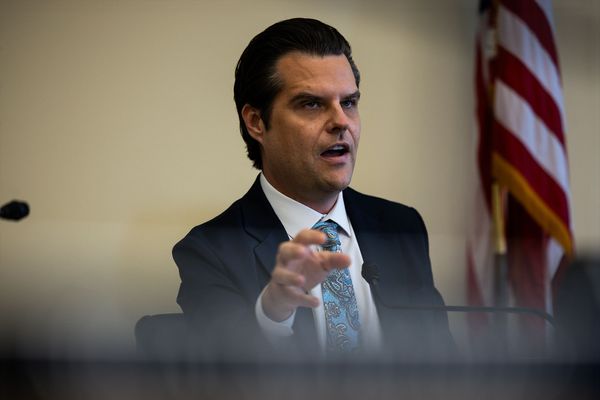
Anthony Albanese wants Australia to make things again. In a speech in Brisbane last week, he set out a bold new direction for industry policy in Australia, “Future Made in Australia”, in which the Commonwealth will again play a leading role in economic planning and strategy.
“We need to be clear-eyed about the economic realities of this decade,” the prime minister argued.
Recognising that the game has changed — and the role of government needs to evolve. Government needs to be more strategic, more sophisticated and a more constructive contributor. We need sharper elbows when it comes to marking out our national interest. And we need to be willing to break with old orthodoxies and pull new levers to advance the national interest.
What is Future Made in Australia, exactly? We’re still a little fuzzy on that. Albanese’s speech contained no dollar figures and did not set out much in the way of specific policy actions. But we can assume the centrepiece will be the $15 billion National Reconstruction Fund (NRF), which is budgeted for and has recently appointed a CEO, Ivan Power. Supposedly he is going to start investing soon.
The NRF has a range of priorities, including minerals, transport, pharma and defence. But renewables will be a big focus. This week, Minister for Skills and Training Brendan O’Connor helped launch a glossy report titled “Towards a Renewable Energy Superpower”.
The influence of US president Joe Biden’s Inflation Reduction Act is clear. Biden’s US$369 billion green investment subsidy has turbocharged US investment in renewables and manufacturing. The clear hope is that an Australian version can do something similar.
A policy for shifting times
In a deglobalising world, investing in strategic manufacturing capabilities may make sense… assuming Australia can actually pull off the difficult task of restarting a long-dormant sector. This is no small challenge, and the recent record of Australian governments implementing ambitious policy rollouts doesn’t encourage optimism.
Criticism from neoliberal voices has already started. The Australian Financial Review editors teed off with a scathing attack on what it called “new protectionism”. The Productivity Commission’s Danielle Wood isn’t happy. Former Reserve Bank governor Bernie Fraser thinks it will be a waste of money.
When it comes to manufacturing capacity, Australia is starting from a long way back. Recent studies of our economic complexity rank Australia at 93rd in the world, between Pakistan and Uganda. The resource-intensive export profile of Australia’s economy is undeniable. Australian business has been relatively bad at product and process development, and we have few world-beating companies that base their competitive advantage around proprietary research. Australian business investment has been at low levels for a decade now, prompting the Reserve Bank to issue several concerned reports.
We know we can’t make a semiconductor or a submarine. But we also struggle to make many basic inputs a modern economy needs. A 2021 Productivity Commission study for the Morrison government on supply chain vulnerability found Australia needs to import nearly all our vital industrial chemicals, as well as machine tools, small metal parts and many types of specialised healthcare products.
Australian innovation policy is underfunded and confused. Research and development (R&D) spending is well down on international benchmarks. The universities are good at primary research but not that good at commercialisation. Business is poor at turning new technologies into products consumers want.
No-one seems to know whether the R&D tax offset actually works either — constant tinkering with the measure over recent years hasn’t helped. As veteran innovation scholar Roy Green pointed out last week, there are no fewer than 182 different line items for innovation and R&D in the federal budget. It’s not clear how they link together in a coherent policy. Perhaps there isn’t one.
Boosting Australia as a future renewables powerhouse makes for good headlines. But elaborately transformed manufacturers require more than just new factories and machinery. They are the product of complex networks of interlinked suppliers and knowledge spillovers. They need skilled labour, favourable regulatory settings and possibly some flavour of special sauce in the form of a competitive advantage.
Australia’s submarine-building fiasco is a perfect example. Constructing something as complex as nuclear submarines requires dense knowledge networks and thousands of highly trained workers — knowledge and skills Australia currently lacks and will need to develop. Other high-tech industries will also require that sort of ramp-up to compete.
The real question may be whether $15 billion is enough. New high-tech industries need lots of money. Investing on a global scale is eye-wateringly capital-intensive. The total capital expenditure going into a single chip-fabrication plant in Arizona is now touted at US$65 billion. Joe Biden’s Commerce Department is putting in US$11.6 billion — roughly A$18.1 billion, more than the total value of the Australian government’s National Reconstruction Fund.
The level of investment required to stay at the cutting edge of industries like semiconductors, wind turbines or solar photovoltaics is frightening. The Samsung corporation’s R&D spending in 2023 was an astonishing 28 trillion Korean won, or A$31.6 billion. Taiwan Semiconductor spends A$9 billion annually on R&D. It is setting up a new manufacturing campus in Hsinchu that will reportedly house 7,000 engineers. China’s world-beating electric carmaker BYD employs an astonishing 90,000 staff in R&D. In comparison, R&D by Australian corporates is a rounding error. One of the most ambitious home-grown efforts, Andrew Forrest’s Fortescue Future Industries, invested “just” $1.14 billion in 2023.
‘National interest and national sovereignty’
Examples like Samsung, BYD or Novo Nordisk show Australia has a lot of work ahead if we’re going to compete in the global race Albanese has signed us up to; the prime minister argues we have no choice.
As Edith Cowan University’s Naoise McDonagh points out, the world is moving into a new era of geopolitical competition, in which the old certainties of “free trade” and globalised supply chains are being upended. “For consumers, the era of getting the most competitively priced goods on the global market is coming to a close,” McDonagh writes, predicting that supply chains will fragment and input costs will rise.
Some markets may end up heavily disrupted by the strategic actions of neighbouring governments, as Australian nickel firms have recently discovered. Under both the Trump and Biden administrations, the US has assiduously moved to lock China out of key technologies such as chip-making, engaging in what Treasury Secretary Janet Yellen has called “friendshoring”.
“Economic complexity”, in itself, shouldn’t be the goal of policymakers. The arguments in favour of economic complexity tend to be made around the resilience and innovation that complex economies can provide. Some research has also shown that economic complexity contributes to higher employment, especially in the kind of high-skill, high-wage jobs that can sustain middle-class living standards.
Economists like to grumble that governments can’t pick winners. But this is not strictly true; some bets do pay off handsomely. Albanese and the suits at the National Reconstruction Fund may get lucky, in the way that Danish charity Novo Nordisk has exploded into the most valuable organisation in Denmark on the back of its miracle drug Ozempic. The potential returns are transformative. Novo Nordisk now earns so much money that its market cap is larger than the entire GDP of Denmark.
Albanese is surely correct when he realises that Australia “must recognise there is a new and widespread willingness to make economic interventions on the basis of national interest and national sovereignty”. Globally, the winner in green technologies is China. That competitive advantage has been driven by overt government intervention under an unapologetic model of state capitalism.
Australia will never be able to make all the goods we need here. But unless we think our current model of a giant quarry with a housing market tacked on is the best of all possible economies, it’s probably worth thinking about how we can diversify it.
Is Future Made in Australia the right or wrong policy direction? Let us know your thoughts by writing to letters@crikey.com.au. Please include your full name to be considered for publication. We reserve the right to edit for length and clarity.







